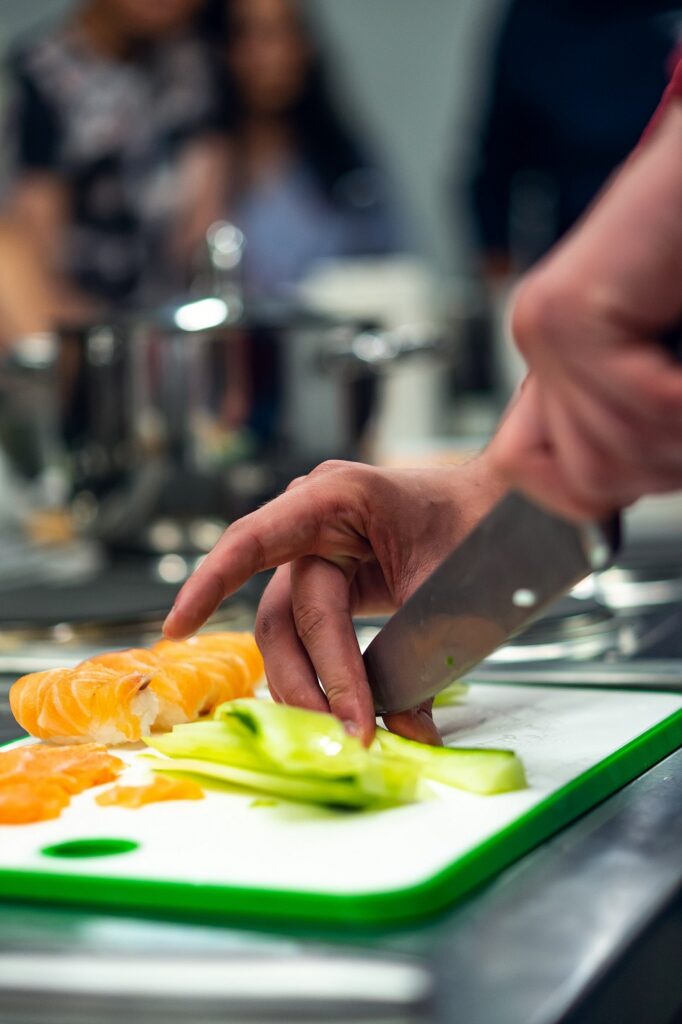5 Basic Cooking Skills and How to Master Them
Cooking is not just a means to satisfy our hunger; it is an art that allows us to explore flavors, create culinary masterpieces, and share our love for food with others. To embark on a culinary journey, it is essential to have a solid foundation in basic cooking skills. In this article, we will discuss the five fundamental cooking skills and provide tips on how to master them, enabling you to unleash your inner chef and create delicious meals with confidence.
- Knife Skills:
Knife skills are the cornerstone of any chef’s repertoire. Being able to handle a knife with precision and dexterity is crucial for efficient cooking. To master this skill, start by investing in a good quality chef’s knife and keeping it sharp. Practice the basic cutting techniques such as chopping, dicing, and slicing. Hold the knife correctly, with your index finger and thumb gripping the blade, and use a claw grip with your other hand to hold the ingredients safely. With practice, your knife skills will improve, and you will be able to chop ingredients quickly and uniformly, saving time and ensuring even cooking.
- Basic Cooking Methods:
Understanding the various cooking methods is essential to achieve the desired flavors and textures in your dishes. The basic cooking methods include sautéing, roasting, boiling, steaming, and braising. Mastering these techniques opens up a world of culinary possibilities. Experiment with different heat levels, cooking times, and seasonings to develop a deep understanding of how each method affects the taste and texture of ingredients. As you gain experience, you will intuitively know when to use each cooking method to enhance the flavor profile of your dishes.
- Seasoning and Flavoring:
The ability to season and flavor food correctly can transform a dish from ordinary to extraordinary. Start by familiarizing yourself with common herbs, spices, and condiments. Experiment with different combinations to understand how they interact and enhance the taste of various ingredients. Develop your palate by tasting and adjusting the seasoning as you cook. Remember that seasoning is a gradual process, so add small amounts at a time and taste as you go. By mastering the art of seasoning, you can bring out the best flavors in your dishes and create memorable dining experiences.
- Temperature Control:
Temperature control is crucial for achieving perfect results in cooking. Whether you’re grilling, baking, or simmering, knowing how to control the heat is essential. Invest in a reliable thermometer to ensure precise temperature readings. Practice monitoring and adjusting heat levels to avoid overcooking or undercooking your food. Different ingredients require different cooking temperatures, so understanding these variations will help you cook meats to your desired doneness, bake pastries to perfection, and sauté vegetables without losing their texture and color.
- Recipe Adaptation and Creativity:
Once you have a solid foundation in basic cooking skills, it’s time to unleash your creativity in the kitchen. Learning how to adapt recipes and experiment with flavors is what sets exceptional cooks apart. Start by following recipes closely to understand the techniques and flavors involved. As you become more confident, feel free to substitute ingredients, modify cooking times, and experiment with new flavors. Keep a record of your experiments, noting the adjustments you made and the results obtained. This way, you can learn from your successes and refine your skills as a chef.
Mastering the five basic cooking skills outlined above is the key to becoming a proficient cook. By honing your knife skills, understanding cooking methods, perfecting seasoning and flavoring, mastering temperature control, and embracing creativity, you will elevate your culinary prowess and create delightful meals that will impress family and friends. Remember that cooking is a continuous learning process, so be patient, persistent, and open to new techniques and flavors.
